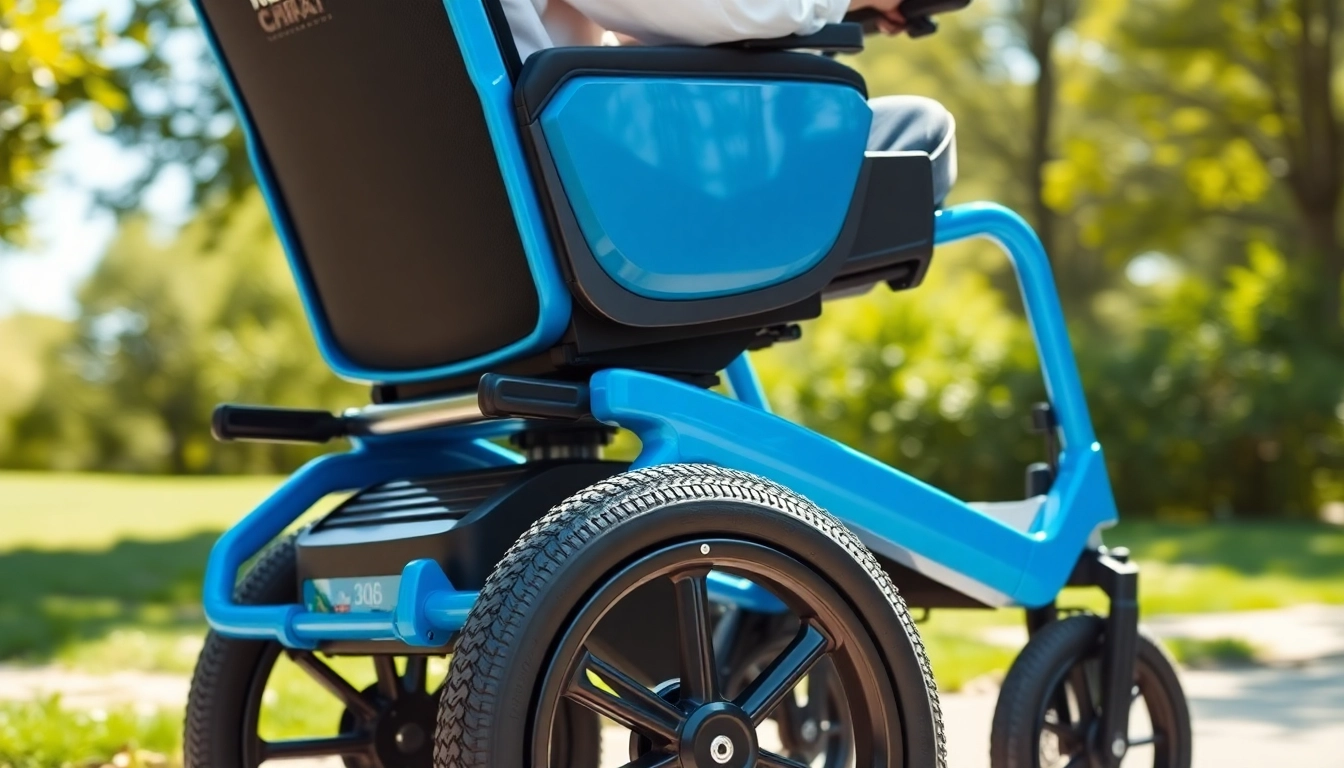Understanding Electric Wheelchairs
In an era where mobility aids are continuously evolving, electric wheelchairs stand out as a significant advancement in assisting individuals with mobility challenges. An electric wheelchair not only offers enhanced independence but also caters to various lifestyles and needs. Understanding the intricacies of electric wheelchairs is crucial for making informed decisions when choosing the right mobility aid.
What is an Electric Wheelchair?
An electric wheelchair, often referred to as a power wheelchair, is a motorized device designed to assist individuals with mobility impairments. Unlike manual wheelchairs, which require physical strength to propel, electric wheelchairs utilize an electric motor, allowing users to navigate their environment with ease. Typically operated through a joystick or similar control device, electric wheelchairs come in various designs, sizes, and functionalities to suit different users’ preferences and requirements.
Benefits of Using an Electric Wheelchair
The benefits of utilizing an electric wheelchair are manifold. Key advantages include:
- Enhanced Independence: Users can navigate independently without the need for assistance, promoting a sense of freedom.
- Improved Mobility: Electric wheelchairs provide mobility over various terrains, including rough or uneven surfaces, making them ideal for outdoor use.
- Reduced Physical Strain: They minimize the physical effort required to move, particularly beneficial for those with limited upper body strength.
- Customization Options: Many electric wheelchairs offer features such as adjustable seating, varied speed settings, and tilt capabilities to enhance comfort and usability.
Key Features to Look For in Electric Wheelchairs
When selecting an electric wheelchair, potential buyers should consider several crucial features:
- Battery Life: Longevity of battery charge is critical for ensuring uninterrupted use, especially for those who plan long outings.
- Weight Capacity: Users need to ensure that the wheelchair can comfortably support their weight.
- Seat Comfort: An ergonomic seat design is essential for users who will be sitting for extended periods.
- Maneuverability: Look for features that enhance turning radius and overall handling for various environments.
- Portability: For some, the ability to transport the wheelchair easily may be a crucial consideration.
Types of Electric Wheelchairs
Electric wheelchairs come in various types, catering to different users’ needs. Understanding the distinctions between these types can help you find the right fit for your lifestyle.
Standard vs. Lightweight Electric Wheelchairs
Standard electric wheelchairs are meant for day-to-day use, featuring robust designs that offer excellent durability. These chairs typically come with various comfort and usability features but can be heavier and less portable. Conversely, lightweight electric wheelchairs are designed for easy transport and general mobility. They often sacrifice sturdiness and some comfort features for better portability, making them suitable for users who may travel frequently.
Portable Electric Wheelchairs for Traveling
Portable electric wheelchairs, also known as travel wheelchairs, prioritize being compact and lightweight. These models are designed to easily fit into vehicles and are often foldable. Ideal for those who travel by air or enjoy outings, they come with adaptable features that ensure functionality without compromising comfort.
All-Terrain Electric Wheelchairs for Outdoor Activities
All-terrain electric wheelchairs are engineered to handle rugged environments, including grass, gravel, and rough pathways. These models come equipped with sturdy wheels and powerful motors, often featuring enhanced suspension systems that ensure user comfort even on uneven surfaces. They are perfect for adventurers who enjoy outdoor recreational activities.
Choosing the Right Electric Wheelchair for Your Needs
Selecting the appropriate electric wheelchair goes beyond the product specifications. A comprehensive assessment of personal needs and lifestyle requirements is crucial.
Assessing Your Mobility Requirements
Each user’s mobility challenges are unique. Assess whether you need the wheelchair for short-distance indoor travel or longer outdoor adventures. Consider your typical environments, such as your home layout or community spaces, to determine the appropriate type of wheelchair that suits your mobility patterns.
Evaluating User Comfort and Usability
Comfort is paramount in choosing an electric wheelchair. Evaluate the seat design, cushion type, and adjustability to ensure it accommodates your body type. Additionally, pay attention to how user-friendly the controls are. Options that offer simple maneuverability can significantly enhance the user experience.
Budget Considerations and Financing Options
The cost of electric wheelchairs can vary widely depending on features and technology. Setting a realistic budget is vital, but it’s also essential to explore financing options. Many companies offer payment plans, and some regions provide financial assistance for mobility aids. Always consider the long-term investment in your health and independence.
Maintaining Your Electric Wheelchair
Proper maintenance is essential to ensure longevity and reliability from your electric wheelchair. By implementing a consistent maintenance routine, users can avoid costly repairs and ensure seamless operation.
Routine Maintenance Tips for Longevity
Maintaining an electric wheelchair includes regular cleaning, inspecting components, and checking battery conditions. Routine cleaning involves wiping down the seat, wheels, and control systems to prevent dirt buildup. Users should also regularly check tire pressure and inspect for wear and tear in mechanics to ensure smooth operation.
Common Issues with Electric Wheelchairs and Solutions
Common issues users might face include battery drain, mechanical malfunctions, or control errors. Battery drain can often be addressed by charging the device correctly. For mechanical issues, seek professional advice for diagnosis and repair. Understanding basic troubleshooting techniques can make a difference in extending the wheelchair’s lifespan.
Upgrading Features for Enhanced Performance
As technology evolves, upgrading features on your electric wheelchair can significantly enhance performance. Look for options such as advanced joystick controls, improved battery technology, and upgraded seating systems. Manufacturers often provide retrofit kits or enhancements to specific models to keep them up to date with advancements in mobility aids.
Real-Life Stories: Transforming Mobility with Electric Wheelchairs
Real-life testimonies highlight how electric wheelchairs have revolutionized the lives of many users, showcasing their diverse experiences and adaptations.
Inspirational User Experiences
Many individuals share remarkable stories of how electric wheelchairs allowed them to reclaim their independence. For example, John, a 54-year-old man with multiple sclerosis, describes how switching to an electric wheelchair enabled him to travel freely, engaging socially and participating in community events he once thought impossible.
Adapting to Life with an Electric Wheelchair
Adapting to life with an electric wheelchair can involve a learning curve. Users frequently discuss the essential adjustments they made, from altering their home’s layout to ensure accessibility to learning how to operate their wheelchairs optimally. Tips and support from peers can ease this transition.
Community Support and Resources
Numerous organizations, both online and local, provide valuable resources, advice, and community support platforms for electric wheelchair users. Forums, local meet-ups, and social media groups foster connections among users, creating an invaluable support network. Many share their modifications, tips, and personal experiences that can benefit others navigating similar challenges.



